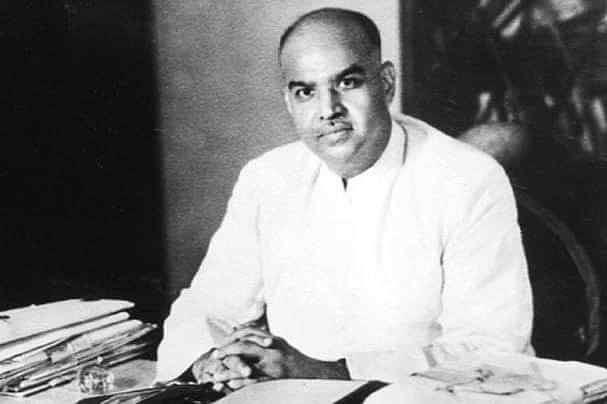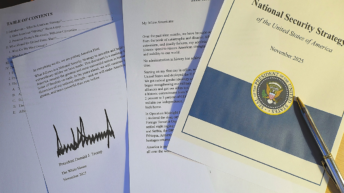
There are broadly four approaches to understand the idea of Indian nationalism – Cambridge, Marxist, Subaltern and Nationalist. The Cambridge or Imperialist approach rejects the idea of Indian nationalism. They relegate it as a competition among Indian leadership for power and a movement of western educated elites. The Marxist school studies Indian nationalism and national movement as a class struggle where bourgeois led the movement and took the support of masses for their vested interests. The Subaltern school studies Indian nationalism from the point of view of marginalised sections of society. The Nationalist approach talks about the dominance of nationalist ideology and national unity where common consciousness grew because of shared antagonism towards the British rule in India, and which encouraged people to take pride in ancient Indian tradition.
Dr Syama Prasad Mukherjee was a leading voice of the Nationalist approach. He created a new understanding of Indian nationalism not only through his writings but also as a front leader who understood the importance of territorial and cultural nationalism simultaneously in a post-colonial nation-state.
Before 1947, independence of India was considered as the only worthy national cause. Participation in it was seen as the greatest service to the nation and the true badge of a nationalist.
After the demise of Mahatma Gandhi, the mantle came to Jawaharlal Nehru who positioned himself as an internationalist and humanitarian. When the simplest route to resolve the Kashmir issue could have been either use of force or bilateral talks, he dragged the issue to the United Nations which at that point was still in an early phase and building legitimacy. Nehru remained the External Affairs Minister for 18 years during which period India witnessed several diplomatic fiascos and lost territories.
At the same time during the 1950s, the Communists who were the second major party in the Parliament cozied up with the Soviet Union and toed its line. The Socialist Party formed after the death of Gandhi, also fragmented before it could take any formidable shape. Later, the socialist politics was reduced to the politics of backward castes and a national vision could not have been expected out of it. Dalit politics was in a nascent stage when Dr BR Ambedkar died.
In this backdrop, a look at the life and politics of Syama Prasad Mukherjee throws up some interesting observations. Mukherjee had gained prominence at the national level in the late 1930s when he associated himself with HIndu Mahasabha and later became its National President. He remained on the national political scene till his mysterious death on 23 June 1953 in Srinagar. During this period, he defined and shaped the idea of nationalism for a safe, secure and prosperous India.
To begin with, he managed to salvage a large territory for India through his efforts. Today, the state of Bengal is an integral part of India. When the division of India became imminent, he campaigned for the division of Bengal. He demanded West Bengal for Hindu Bengalis.
Mukherjee was the Industry Minister in Nehru’s interim government and took many initiatives but he took no time to resign when he found that Nehru and Liyaqat Ali signed a Pact which guaranteed minority rights in both the countries. Mukherjee wanted to hold Pakistan accountable for the huge influx of millions of Hindu refugees from East Pakistan, who were fleeing due to communal violence who were looted, raped and killed by Muslims there.
Syama Prasad Mukherjee was a towering leader and intellectual par excellence but he did not have much by way of organisational support. After his consultation with RSS chief MS Golwalkar, he founded a political party named Bhartiya Jana Sangh (BJS). He had the choice to form a party with ‘Hindu’ in its title or even to simply continue with Hindu Mahasabha, but he chose to form a party with a nationalist vision. He was an unequivocal supporter of the idea that the civilisational identity of India has a continuity which can be best defined in terms of being Hindu. He was clear that there should be no compromise with Hindu interests and Hindu population should not be treated as secondary subjects as done for more than 700 years by different foreign rulers.
The understanding of the RSS and its leaders like Deen Dayal Upadhyay, Atal Bihari Vajpayee, and Balraj Madhok, added to this post-Independence discourse on nationalism. This discourse was clearly inspired by the ideas of freedom fighters like Tilak, Lajpat Rai, Bipin Chandra Pal, Aurobindo, Savarkar, as well as spiritual gurus like Dayanand, Ram Krishna and Vivekanand. The idea of cultural nationalism propagated by BJS and BJP leaders like Vajpayee and Advani appeared in continuation to the ideas practiced and propagated by Mukherjee who believed in the age-old civilisational ethos of India.
Mukherjee knew that territorial integrity is an essential part of the nation-state building process. He moved a resolution at the first national convention of BJS and campaigned across the country for total integration of Jammu and Kashmir with the rest of India. He opposed the permit system that created bureaucratic barriers to enter Jammu and Kashmir. He tried to enter the state without a permit. For this, he was arrested, and later mysteriously died at a Srinagar jail. Nehru did not form an enquiry committee to investigate the causes of his death even after repeated pleas from his mother Jogmaya Devi.
Syama Prasad Mukherjee was a modern, conservative, nationalist who not only worked for the idea of ‘territorial nationalism’ but also played an important role in popularising the idea of ‘cultural nationalism’ which later become the bedrock for BJS and BJP and showed a new path to the youth in post-independence India. The little stream of nationalism so painstakingly nurtured by Mukherjee is a roaring mahasagar today.






Very well articulated , and synchronised
It gave a crisp idea with backdrop
Nice to read…
Every year Council of Scientific and Industrial Research provide “Dr. Syama Prasad Mukherjee (SPM) fellowship ” to the research scholar.
One of the best Scholary Article in contemporary times.
One of the best Scholary Article in contemporary times.
A wonderfully encapsulated account of Shri Shyama Prasad Mukherjee ji
Very informative and a good piece of work.
Excellent article……many congratulations.
Very nicely written. Touched all minute details about Dr Shyama Prasad Mukherjee!